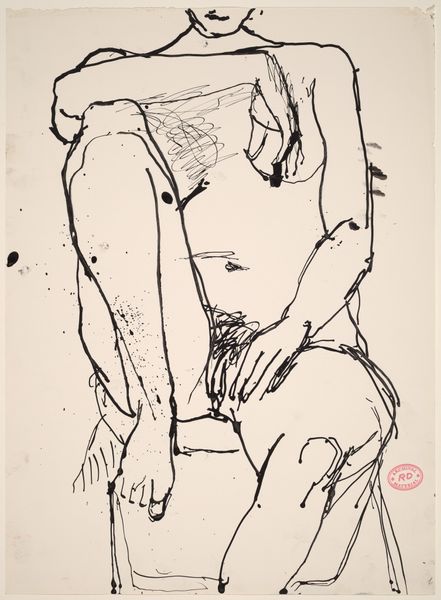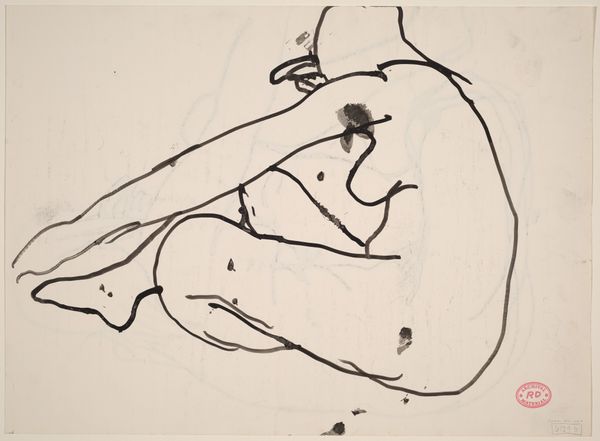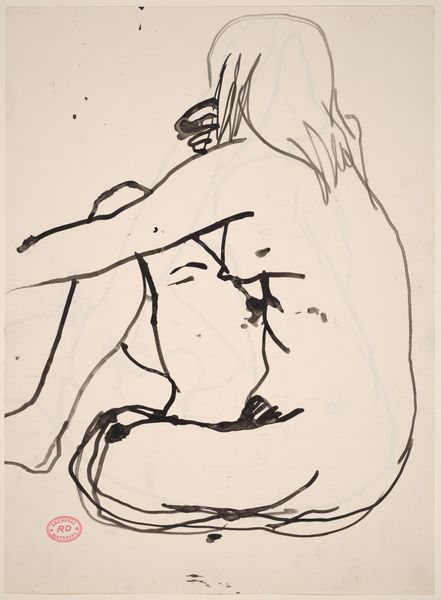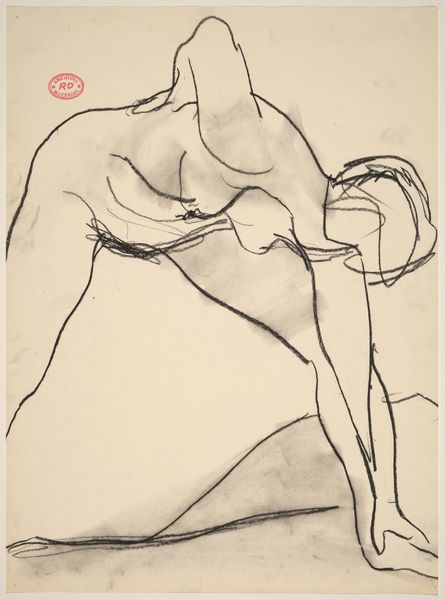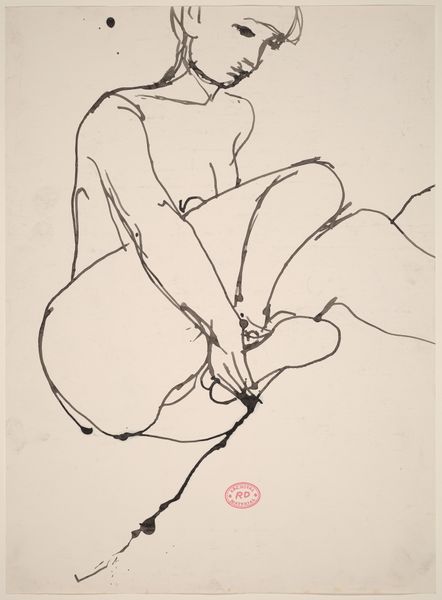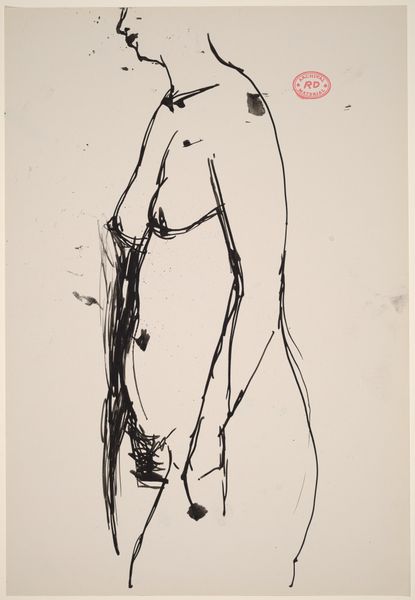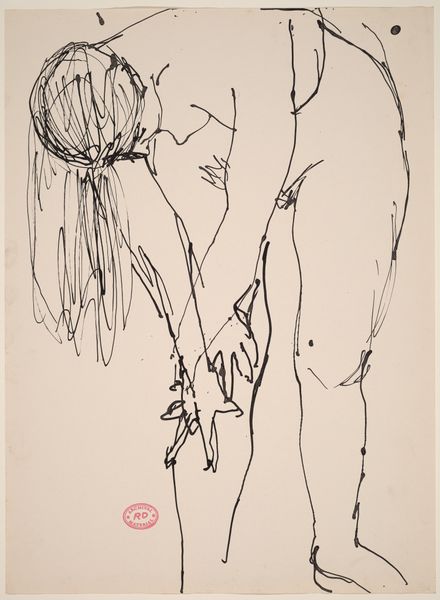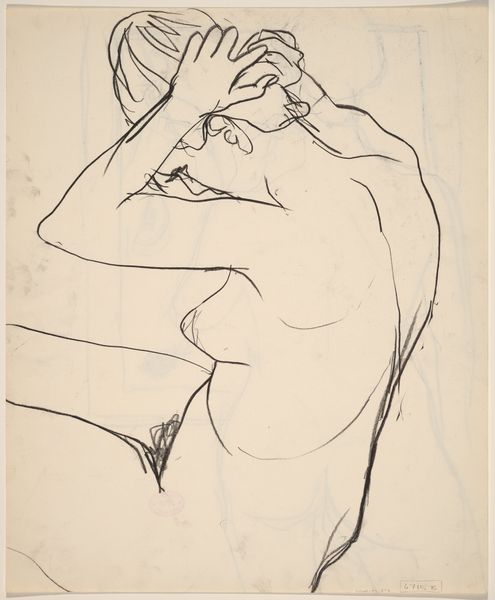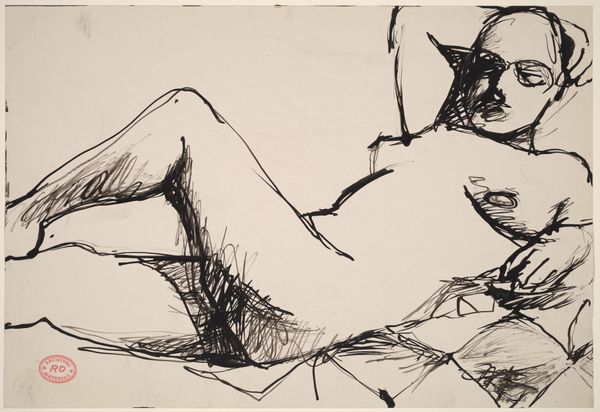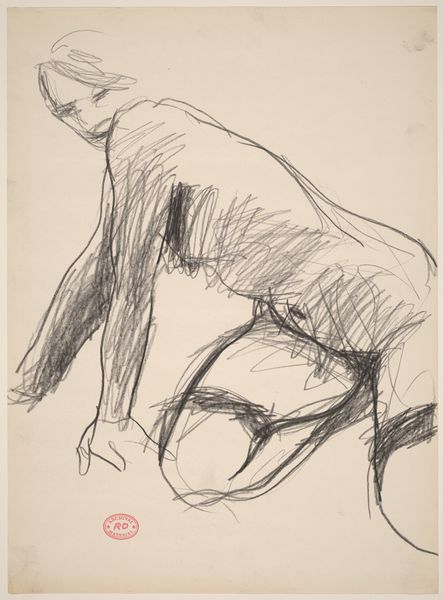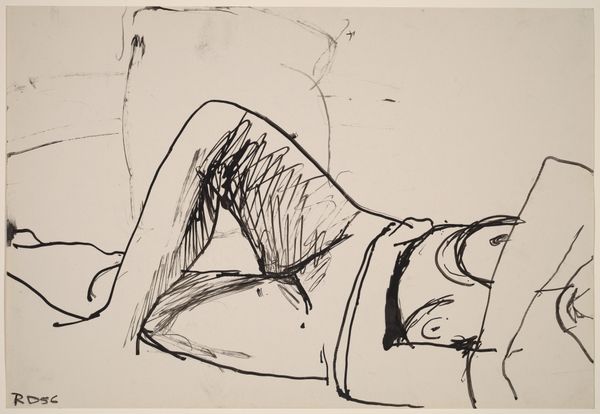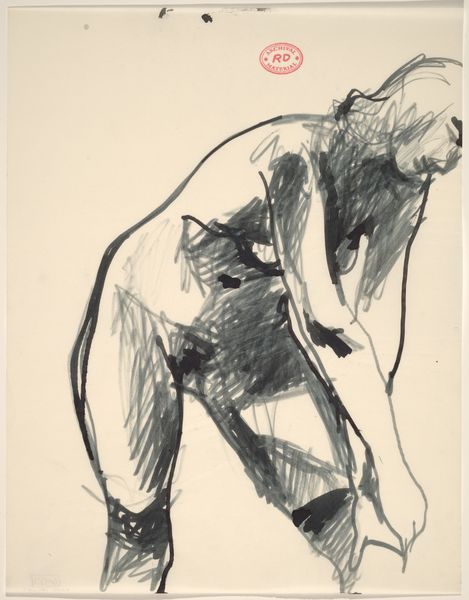![Untitled [bird's-eye view of nude resting on her side] by Richard Diebenkorn](/_next/image?url=https%3A%2F%2Fd2w8kbdekdi1gv.cloudfront.net%2FeyJidWNrZXQiOiAiYXJ0ZXJhLWltYWdlcy1idWNrZXQiLCAia2V5IjogImFydHdvcmtzL2M4ZWRkM2EwLTVjNDAtNDViMC04YWQxLTYyMmIxNTM0YzYxMi9jOGVkZDNhMC01YzQwLTQ1YjAtOGFkMS02MjJiMTUzNGM2MTJfZnVsbC5qcGciLCAiZWRpdHMiOiB7InJlc2l6ZSI6IHsid2lkdGgiOiAxOTIwLCAiaGVpZ2h0IjogMTkyMCwgImZpdCI6ICJpbnNpZGUifX19&w=3840&q=75)
Untitled [bird's-eye view of nude resting on her side] 1955 - 1967
0:00
0:00
drawing, ink, pen
#
drawing
#
ink drawing
#
self-portrait
#
pen illustration
#
pen sketch
#
figuration
#
ink line art
#
bay-area-figurative-movement
#
ink
#
pen-ink sketch
#
line
#
sketchbook drawing
#
pen
#
nude
Dimensions: overall: 43.2 x 27.9 cm (17 x 11 in.)
Copyright: National Gallery of Art: CC0 1.0
Curator: This ink drawing, made with pen, by Richard Diebenkorn, is titled "Untitled [bird's-eye view of nude resting on her side]". He worked on it sometime between 1955 and 1967. Editor: Immediately, I'm struck by its dynamic instability, the figure feels like it’s rotating or perhaps collapsing into itself, creating a very interesting tension between line and void. Curator: The bird's-eye view offers an intimate, yet strangely detached perspective. It makes me think of how the female nude has been viewed and portrayed throughout art history, especially when considered with Diebenkorn’s broader exploration of perspective in his other works. Does this angle subvert traditional portrayals or reinforce them? Editor: Well, structurally, the rapid, almost frantic, strokes give the piece a raw, unfinished quality. The lines vary in thickness and pressure, which contributes to the sense of movement, of the body in transition. See how the head is rendered with dense scribbles compared to the comparatively sparse contours of the limbs. Curator: That density around the head could symbolize the mental space, the interiority, perhaps in contrast to the objectification of the body. The line, for Diebenkorn, carries an almost psychic charge, tracing the contours of both the seen and the unseen, mapping an internal state onto the external form. Editor: The empty space also plays a critical role. The figure seems almost to float, disconnected from any ground. It isolates the form and highlights the pure relationship between the line and the paper. It brings a quiet introspection despite the otherwise energetic mark-making. Curator: In the context of post-war abstraction, Diebenkorn’s return to figuration signals an interesting negotiation between the symbolic weight of the body and the formal concerns of line, shape, and composition. I feel his work acknowledges this tension while refusing to resolve it. Editor: Indeed, a satisfying blend. It stays with you long after you've examined it.
Comments
No comments
Be the first to comment and join the conversation on the ultimate creative platform.
